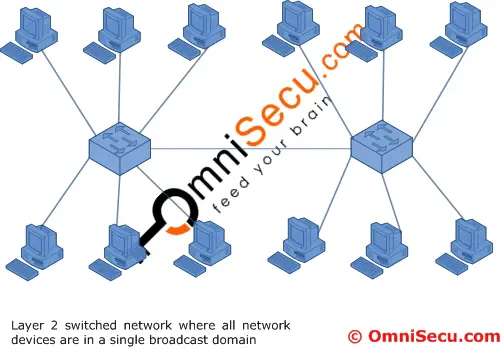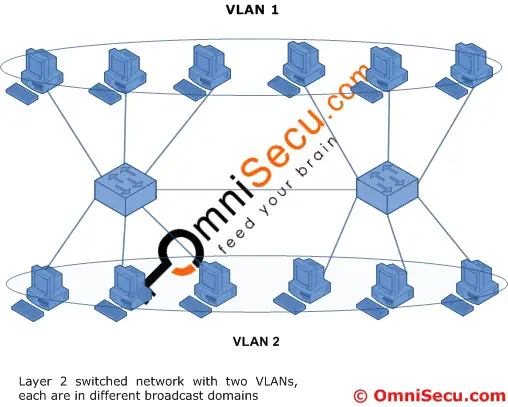What is VLAN (Virtual Local Area Network)
In a layer 2 switched network, each network segment has its own collision domain and all segments are in same broadcast domain. Every broadcast is seen by every device on the network. A layer 3 device (typically a Router) is used to segment (divide) a broadcast domain to multiple broadcast domains.

By default, all ports on a switch are in the same broadcast domain. A Virtual Local Area Network, Virtual LAN, or VLAN, can be used to segment (divide) a single broadcast domain to multiple broadcast domains in a layer 2 switched network.

VLANs are not restricted to any physical boundary in the switched network if the devices are interconnected using switches. A VLAN can span across multiple switches, or it can be limited within a switch. A VLAN must be configured as a separate Layer 3 IP subnet and you need a Layer 3 device (typically a Router) to enable communication between different VLANs.
Therefor a VLAN = Broadcast Domain = A Separate IP subnet